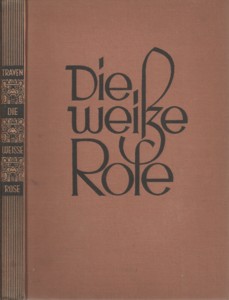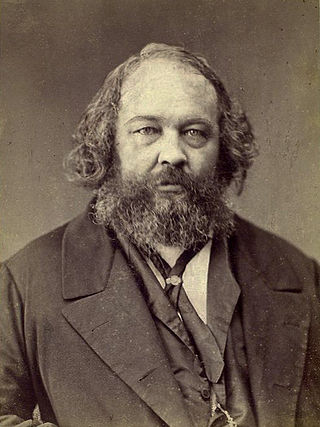
The Stranger, also published in English as The Outsider, is a 1942 novella by French author Albert Camus. Its theme and outlook are often cited as examples of Camus' philosophy, absurdism, coupled with existentialism; though Camus personally rejected the latter label.

Willa Sibert Cather was an American writer known for her novels of life on the Great Plains, including O Pioneers!, The Song of the Lark, and My Ántonia. In 1923, she was awarded the Pulitzer Prize for One of Ours, a novel set during World War I.

Georg Philipp Friedrich Freiherr von Hardenberg, pen name Novalis, was a German polymath who was a writer, philosopher, poet, aristocrat and mystic. He is regarded as an idiosyncratic and influential figure of Jena Romanticism.

B. Traven was the pen name of a novelist, presumed to be German, whose real name, nationality, date and place of birth and details of biography are all subject to dispute. One certainty about Traven's life is that he lived for years in Mexico, where the majority of his fiction is also set—including The Treasure of the Sierra Madre (1927), the film adaptation of which won three Academy Awards in 1948.

Hunger is a novel by the Norwegian author Knut Hamsun published in 1890 by P.G. Philipsens Forlag. The novel has been hailed as the literary opening of the 20th century and an outstanding example of modern, psychology-driven literature. Hunger portrays the irrationality of the human mind in an intriguing and sometimes humorous manner.

Every Man Dies Alone or Alone in Berlin is a 1947 novel by German author Hans Fallada. It is based on the true story of working-class husband and wife Otto and Elise Hampel who, acting alone, became part of the German Resistance. Fallada's book was one of the first anti-Nazi novels to be published by a German after World War II.

The Train Was on Time is a novella by German author Heinrich Böll. Published by Friedrich Middelhauve Verlag in Cologne in 1949, the book is about a German soldier, Andreas, taking a train to Przemyśl in Poland. It was translated into English by Leila Vennewitz.

Jay Bennett was an American author and two-time winner of the Edgar Award from the Mystery Writers of America. Bennett won the Edgar for Best Juvenile novel in 1974 and 1975, for The Long Black Coat and The Dangling Witness, respectively. He was the first author to win an Edgar in consecutive years. A third book, The Skeleton Man, was nominated in 1987. Bennett is best known among English teachers and young adults for these and other juvenile mysteries, like Deathman, Do Not Follow Me (Scholastic).

The Land of Green Plums is a novel by Herta Müller, published in 1994 by Rowohlt Verlag. The novel portrays four young people living in a totalitarian police state in Communist Romania, ending with their emigration to Germany. The narrator is an unidentified young woman belonging to the ethnic German minority. Müller said the novel was written "in memory of my Romanian friends who were killed under the Ceauşescu regime".

The Death Ship is a 1959 West German adventure film directed by Georg Tressler and starring Horst Buchholz, Mario Adorf, Helmut Schmid, and Elke Sommer. The film is based on the book of the same name by B. Traven, author of The Treasure of Sierra Madre, and was filmed on location in Spain. The film's sets were designed by the art directors Emil Hasler and Walter Kutz.
A coffin ship is any ship that has been overinsured and is therefore worth more to its owners sunk than afloat. These were hazardous places to work in the days before effective maritime safety regulation. They were generally eliminated in the 1870s with the success of reforms championed by British MP Samuel Plimsoll.

The White Rose is a novel by B. Traven, first published in 1929. Originally published in German by Münchener Post, the first English translation appeared in 1979.

Nautical fiction, frequently also naval fiction, sea fiction, naval adventure fiction or maritime fiction, is a genre of literature with a setting on or near the sea, that focuses on the human relationship to the sea and sea voyages and highlights nautical culture in these environments. The settings of nautical fiction vary greatly, including merchant ships, liners, naval ships, fishing vessels, life boats, etc., along with sea ports and fishing villages. When describing nautical fiction, scholars most frequently refer to novels, novellas, and short stories, sometimes under the name of sea novels or sea stories. These works are sometimes adapted for the theatre, film and television.

The Unknown Revolution is a 1947 history of the Russian Revolution by Voline.
Otto Rosenberg (1927–2001), was a Holocaust survivor, author of A Gypsy in Auschwitz (1999), activist, and founder of Sinti Union of Berlin and Organization for German Sinti and Roma. He was detained in Berlin-Marzahn in 1939. He was born in East Prussia and raised in Berlin.
B. Traven: The Life Behind the Legends is a biography of the novelist B. Traven by Karl Guthke. Originally published in German as B. Traven: Biographie eines Rätsels in 1987, Robert Sprung translated the book into English in 1991.
B. Traven: A Vision of Mexico is a study of B. Traven's experience in Mexico written by Heidi Zogbaum.
The Cotton-Pickers is a 1926 novel by B. Traven.

B. Traven was a pseudonymous novelist whose most famous book was The Treasure of the Sierra Madre (1927), inspiring the 1948 film of the same name that won three Academy Awards. Over the years, several theories as to his true identity have been proposed.

Mikhail Bakunin's Confession is an 1851 autobiographical work written by the imprisoned anarchist for clemency from Russian Emperor Nicholas I.















